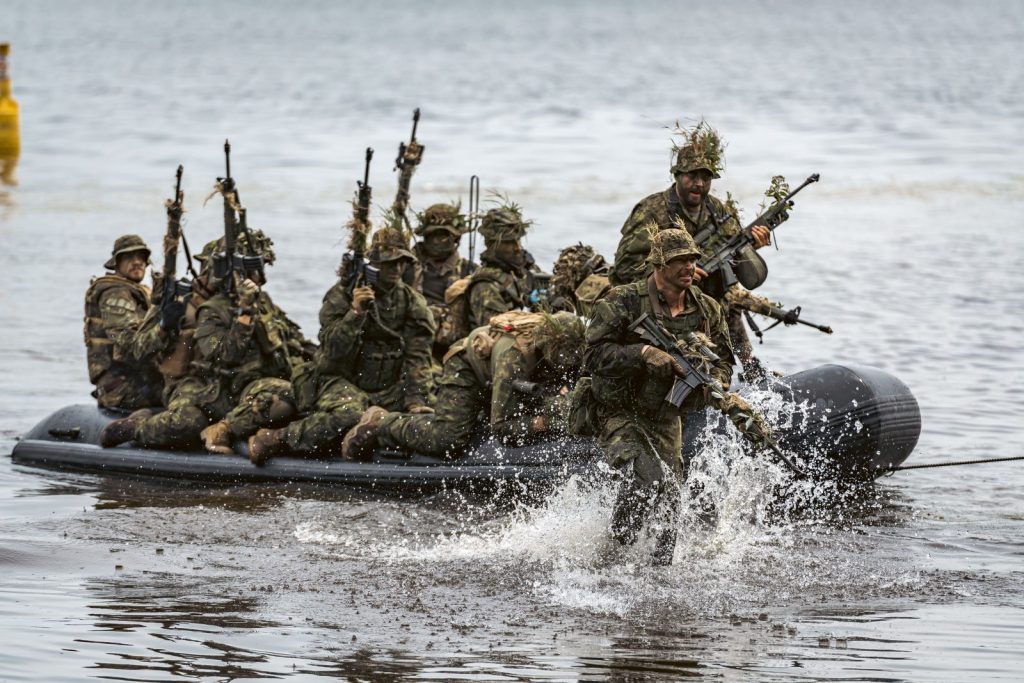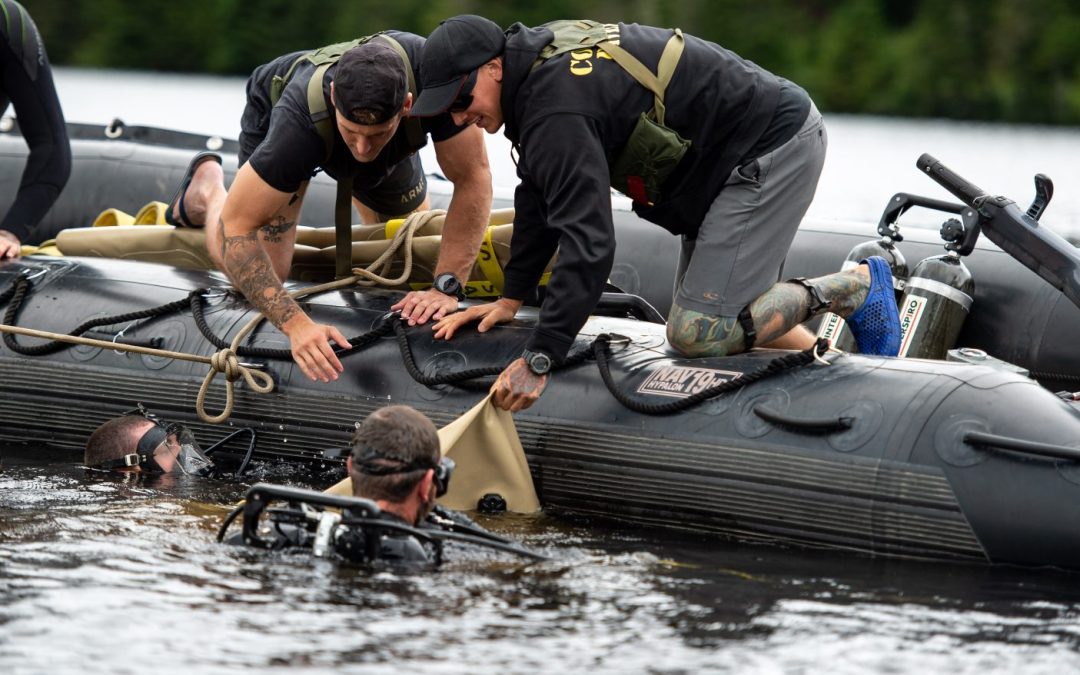by Ken Pole
Some years ago, during his 32-year Army career, when he was a Colonel, John Errington, who retired last summer as a Brigadier-General and Commandant of the Canadian Forces College in Toronto, observed about Army divers:
“Dive operations are a vital capability in the Canadian Army as well as among Canada’s allies … throughout the spectrum of conflict from peacekeeping to combat operations. They require physical robustness and mental agility, so it is not surprising that they are among the best soldiers in any force.”
It was high praise from the storied “been there done that” officer.
Diving in the Canadian Army began in the 1960s with the arrival of amphibious vehicles, the latest of which is the Bandvagn 206, manufactured by Hägglunds of Sweden. While the BV206, which entered service in 1980, has an excellent operational record, some predecessors needed emergency diver support.
Diving sections were established in Army engineer units in 1969. Those evolved into combat diving with combat engineering. The divers’ missions began to include obstacle construction and breaching, mine warfare and underwater construction. Now an Occupation Sub-Specialization within the Army’s four regiments of combat engineers, divers work mainly inland, either on the surface or beneath it in close support of ground operations. They are also used for reconnaissance and may sometimes work in salt water, usually the realm of Royal Canadian Navy clearance divers.
It was such a mission that kick-started a project to replace the Army’s conventional inflatable boats. In September 1998, Army divers were involved in the recovery of debris from SwissAir Flight 111, which crashed into the Atlantic eight kilometres off Nova Scotia shortly after a late-night takeoff from New York to Geneva. All 229 crew and passengers died, and the impact left a huge field for the divers to search. That grim task was complicated by the realization that the Army’s inflatables were simply unsuited to conditions offshore.
The Army filed a “deficiency” report, but it took a while for all the parties involved to come to an agreement on how to proceed. A first Public Services and Procurement Canada (PSPC) call for bids in May 2016 was revised less than two months later and then cancelled “following questions from industry regarding the performance specifications.”
A new tender issued that November resulted in four bids. In January 2017, PSPC awarded a $6.4-million contract to Zodiac Hurricane Technologies of Delta, British Columbia. But that, too, was cancelled due to “an irregularity regarding the conduct of the bid evaluation.”
The Department of National Defence said there was no operational impact, but the clock was clearly ticking on an aging fleet of inflatables. And the replacement project is as yet unfunded.

Members of 33 Canadian Brigade Group conduct an assault boat landing during Exercise Stalwart Wolf in Petawawa in August 2022. Photo: S1 Camden Scott
The Army is now in the process of preparing a funding request for submission, said Master Warrant Officer Daniel Roberge of the Directorate of Land Requirements.
To maintain the current fleet, the Army is leaning on PSPC a $16.5-million contract awarded to Zodiac Hurricane Technologies for “as required” inspection, repair, and overhaul of more than 1,000 all-fabric inflatables, as well as more than 250 rigid-hulled inflatable boat (RHIBs) used by others, including the Navy.
That contract is set to expire at the end of this year but there is an option to renew for a further three years to “ensure the CAF’s fleet of inflatable boats remains capable of meeting current and future operational demands for missions such as search and rescue, dive support, fishery patrols, boarding party operations, and the transfer of personnel and equipment.”
What, then, is the Army looking for?
“Inflatables are fragile, especially for beaching” when their fabric hulls are often run onto land at fairly high speed to get troops quickly into action at reduced risk. “The boats we have right now are always going for repair,” said Roberge, pointing out that most are at least 10 years old, an eternity in the rubber boat world. “There’s more patch than rubber on some of them.”
The logical replacement would be an all-RHIB fleet with composite or aluminum hulls. The current focus is a boat approximately nine metres in length, with a 2.5-3m beam easily transportable by trailer. It must also be suitable for deployment from ships and by Air Force aircraft such as the CH-147F Chinook helicopter, CC-130J Hercules and CC-117 Globemaster III.
The tandem-rotor Chinook’s cabin is 9.14 metres long, 2.53m wide and 1.98m high. The Hercules measures 12.5m by 2.74m by 2.05m and the Globemaster is a cavernous 25.82m by 5.48m by 3.76m. A pair of nine-metre RHIBs would present no challenge for the latter, but their outer tubes would need to be deflated to fit in the other two.
As for powering RHIBs to a cruising speed of 30 knots or even faster when required and when the weather permits, there are several options: internal diesel engines, monster outboards — which can be swapped out quickly for maintenance — or, given the way battery technologies are evolving, electric drives.
“Right now, we’re looking at having seating for 10 divers,” Roberge said, and capacity to securely carry heavy conventional dive tanks, which are generally mounted in pairs, or other lighter but often bulkier breathing gear, as well as weapons and other equipment.
The numbers required also remain to be determined. Right now, two would be set aside for training and one boat would be assigned to each of the combat engineer regiments in Edmonton, Petawawa, Valcartier and Gagetown.
The project still requires budget approval, putting it on track to deliver new boats within the next three to four years, Roberge acknowledged. “But we’re in the process of preparing to submit that, hopefully before the spring.”

